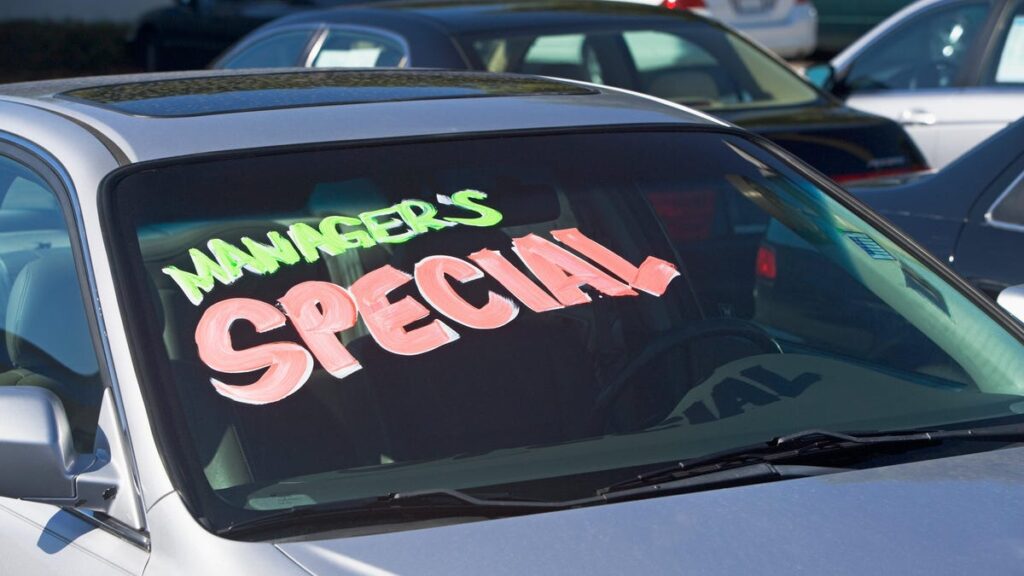The Average Used-Car Loan Interest Rate Is Over 12 Percent and You People Are Stressing Me Out

Photo: Getty Images (Getty Images)
There is, any old financial advisor will tell you, Good Debt — which is mainly just a mortgage and student debt for an undergraduate degree — and Bad Debt — which is credit card debt more or less, which you ran up spending on clothes and other bullshit. Good Debt will theoretically increase future earnings, because your home will likely grow in value, and getting a college degree should get you a higher-paying job. Bad Debt will do the opposite, because you racked it up buying clothes and other dumb bullshit, very likely at a high interest rate.
Then, there is car debt, which is hotly debated as being Bad Debt, or possibly Good Debt, or possibly both. The car-debt-is-good camp generally argues that, since cars are a necessity to work in most of America, borrowing money to buy a car is simply non-negotiable, and also it helps you make money by keeping you employed. The car-debt-is-bad camp generally argues that it’s a bad idea to borrow money to pay for a depreciating asset, which is what a car becomes as soon as you drive it off the lot.
That goes for borrowing, whether it’s to buy new or used. Though, interest rates on new cars tend to be lower than on used cars, because for the lender, a new car offer less risk — when they have to repossess your car because you’ve stopped paying your loan, a new car is likely to be worth more than a used car at auction.
Anyway, this is a lot of throat-clearing to present the following nugget in a story in The New York Times today about the used-car market. The story is about how the boom in used cars is ending, and about how Carvana and CarMax are hurting as a result, which we’ve covered in this space before. The story also says that analysts think that around 36 million used cars will trade hands in the U.S. in 2023, while a little less than half of that number will be sold new.
Then came the nugget in question, emphasis mine:
The Federal Reserve’s campaign to raise interest rates to fight inflation has made it harder and more expensive to buy cars. In December, the average interest rate on used car loans was 12.37 percent, up from less than 10 percent a year before, according to Cox Automotive.
G/O Media may get a commission

Grow those luscious locks back
This proprietary, prescription-grade topical Finasteride is proven to regrow hair in just a few months.
Another way to define whether a debt is Bad or Good is whether the interest rate is Completely Psychotic or Basically Fine. The dividing line for many financial advisors, for example, is 7 percent, meaning that you should be aggressively paying down any debt you have with an interest rate over 7 percent, and merely making your regular monthly payment on debt with an interest rate less than 7 percent.
That’s because, historically, 7 percent is roughly the average annual rise in the S&P 500 after inflation is taken into account. So instead of aggressively paying down debt that costs less than that, you’d be better off investing your extra money. (Others argue for a more conservative threshold of 6 percent, but, to be clear, none of this is investment advice.)
I can also say with some certainty that 12.37 percent is an absolute garbage, no-good interest rate in most economic environments, from a consumer’s perspective. And Cox, via the NYT, says that is merely the average, which means that many used-car buyers are taking out loans with even higher interest rates. Many of those people, presumably, have very little choice in the matter, such is the Faustian bargain that is car ownership for the poor in an America with garbage public transportation.
For those of you that do have somewhat of a choice, I’m begging you to read those loan documents before you sign them and not just look at, say, the size of the monthly payment, which may seem small and/or palatable enough, which is what they want you to think. Consider, too, the total cost of the loan, because all these used cars out here with double-digit interest loans are stressing me out. Consider that one day, maybe, with a decent enough interest rate, a car payment doesn’t have to be a fact of life for you.



